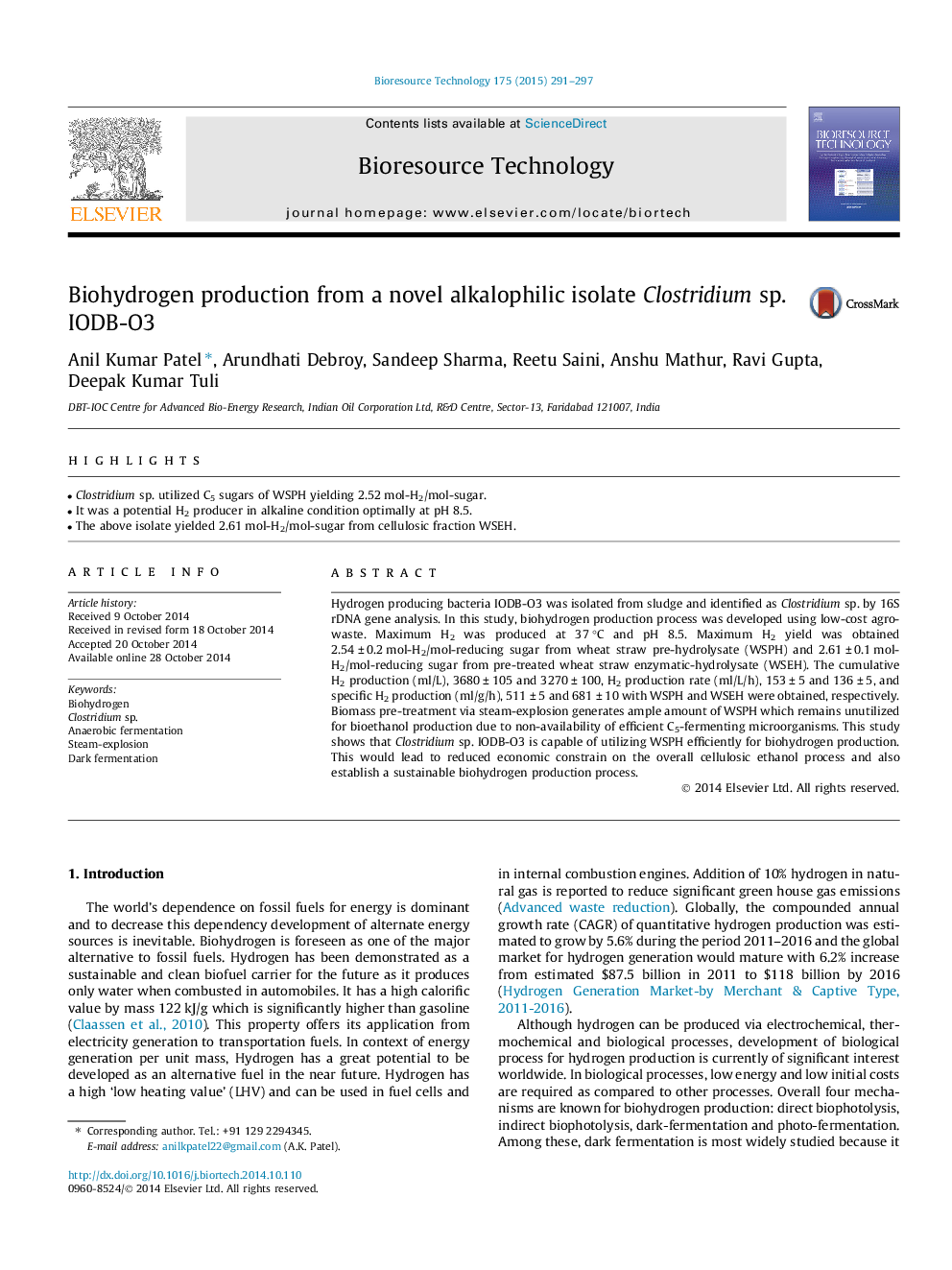| Article ID | Journal | Published Year | Pages | File Type |
|---|---|---|---|---|
| 680288 | Bioresource Technology | 2015 | 7 Pages |
•Clostridium sp. utilized C5 sugars of WSPH yielding 2.52 mol-H2/mol-sugar.•It was a potential H2 producer in alkaline condition optimally at pH 8.5.•The above isolate yielded 2.61 mol-H2/mol-sugar from cellulosic fraction WSEH.
Hydrogen producing bacteria IODB-O3 was isolated from sludge and identified as Clostridium sp. by 16S rDNA gene analysis. In this study, biohydrogen production process was developed using low-cost agro-waste. Maximum H2 was produced at 37 °C and pH 8.5. Maximum H2 yield was obtained 2.54 ± 0.2 mol-H2/mol-reducing sugar from wheat straw pre-hydrolysate (WSPH) and 2.61 ± 0.1 mol-H2/mol-reducing sugar from pre-treated wheat straw enzymatic-hydrolysate (WSEH). The cumulative H2 production (ml/L), 3680 ± 105 and 3270 ± 100, H2 production rate (ml/L/h), 153 ± 5 and 136 ± 5, and specific H2 production (ml/g/h), 511 ± 5 and 681 ± 10 with WSPH and WSEH were obtained, respectively. Biomass pre-treatment via steam-explosion generates ample amount of WSPH which remains unutilized for bioethanol production due to non-availability of efficient C5-fermenting microorganisms. This study shows that Clostridium sp. IODB-O3 is capable of utilizing WSPH efficiently for biohydrogen production. This would lead to reduced economic constrain on the overall cellulosic ethanol process and also establish a sustainable biohydrogen production process.
